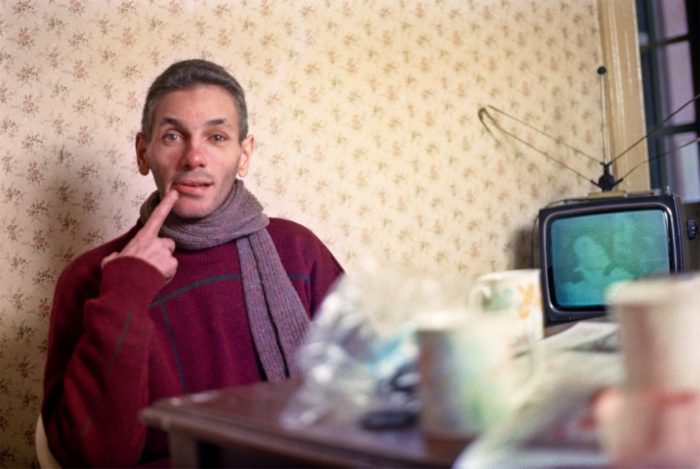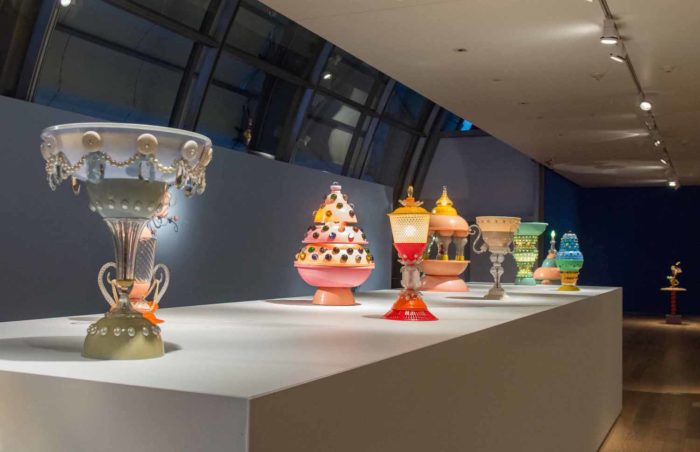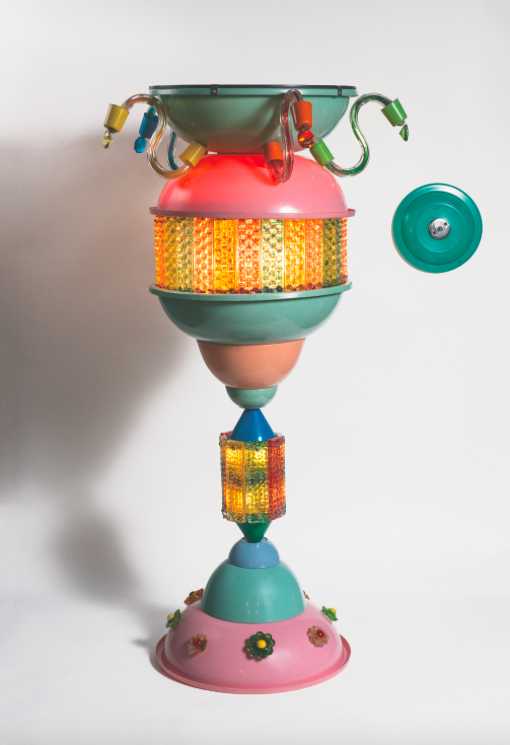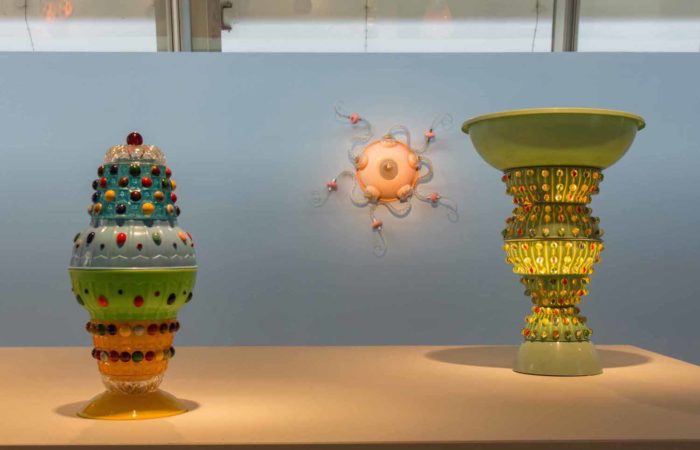
16.05.2018
by Alejo Ponce de León, Buenos Aires, Argentina
April 6, 2018 – June 10, 2018

The sculptures in this exhibition emerge from a story, but not from simple anecdotes secondary to their composition, or a cool story of an artist who has returned from a residency in the Nordic countries. If the reviews written so far of Omar Schiliro’s posthumous retrospective Ahora voy a brillar agree on something, it is that the works displayed in the exhibition are connected by a central backstory: that of a poor, mixed-race, gay man who became an artist overnight and in less than three years produced a series of deep, urgent, and innocently magnificent sculptures, knowing that he had little time left to live due to health complications linked to AIDS.
Curated by the sculptor Cristina Schiavi and the painter Paola Vega, under the spiritual patronage and based on the original idea of Jorge Jumier Maier, this show brings together the work Schiliro made during his brief artistic career before his death in 1994. The sculptures in the show, fewer than 35 in total, could be described as a celestial mutation of his work as a street craftsman, sustained by the tension between Chinese plastic and glass beads, between typical neoclassical decorative forms and the plebian luxury of poverty. This same dialectic, which is perhaps the distinguishing characteristic of the aesthetic program of the 90s in Argentina and has been discussed ad nauseum in studies and critical texts, was definitively established by Schiliro, in whose work an admirable sensitivity to the treatment of form produced highly-concentrated yet balanced sculptures that are friendly with the baroque, sensual, and accessible fields. It could also be said that the definitive transition from abject aesthetics, anti-aesthetics, and transdisciplinarity that was cultivated in Parakultural [1] and the first glimmer of organized amateur art that involved Gumier Maier’s coordination at the Centro Cultural Rojas ended with Schiliro’s death, but that would be another story.


For some time now, the Museo Fortabat has been organizing important retrospectives that dispute the Museo de Arte Moderno de Buenos Aires’s status as the primary cultural agent responsible for the discursive construction of the recent artistic canon. The Fortabat and the MAMBA offer two institutional models that are not necessarily oppositional (for example, both museums charge for admission and the Fortabat’s admission price is quite expensive), but it is curious that a private collection led by a ghost leadership team and with no curatorial team has come to host important exhibitions of such artists as Schiliro, Marcia Schvartz, and Marcelo Pombo, all of which have little to envy compared with the Alberto Goldenstein or Fabio Kacero exhibitions at the city’s public museum. It is remarkable that an institution that does not respect the contemporary institutional structure and instead substitutes an opaque, arbitrary, and corporate system typical of the private sector in Argentina has succeeded in proposing programming as attractive as museums with normative aspirations. I don’t mean to say that the MAMBA’s leadership is not based on a cult of personality, rather that despite its director, the organization tries, on paper at least and given its importance in the public scene, to be a “proper” museum that employs young professionals concerned with Argentine art history. In the Fortabat, on the other hand, the political vices of the business appear to persist openly and yet the shows there feel more focused, more willing to leave space for the pieces to operate and for their effects to unfold. Of all the shows that have been housed in the Puerto Madero building, this is without a doubt the most navigable.
Perhaps because they are both artists, Schiavi and Vega’s curation leaves aside pretentions of flirting with the spatial rhetoric of the museum and its generic solutions. While it is true that the volume of works is less than in previous retrospectives held at the Fortabat, there is a relationship of loving complicity between the curators and the work that translates into an intuitive order marked by a joyous, unconcerned, drift that is almost devoid of political reflections and features minimal usage of archival materials (the little they could find).

An exhibition like this is a strange occurrence for the Buenos Aires scene, since it brings together and shows art with no process, almost without evolution, with start and end dates for its production that are very close in time. In this sense, both the sculptural work and the show itself are like an apparition, a comet, a perfect one-night sexual encounter. With the dramatic extinction of his life, one is left with the impression that Schiliro came to the world to make these pieces.
The people who loved and today continue to love these sculptures are wealthy women who do not know anything about art but empathize with a certain formal lightness, happily deviant collectors, a small number of artist colleagues, and in general anyone who is predisposed to experience the world in a sensitive way. It is said that in one of the few exhibitions he held during his life, Schiliro decided to install his works on low platforms so that children could see them. As a curatorial project, Ahora voy a brillar is almost exclusively based on that friendly and autonomous condition of the sculptures. Although they are the product of Omar Schiliro’s life story, this is an exhibition without a narrative and that reconstructs the artist’s life from a disassociated, adjacent place.


Is it possible to take part in this exhibition without knowing Schiliro’s story? The answer is surely affirmative, since each work is an inert mechanism that acts unilaterally. Is it possible, however, to talk about the works without mentioning the story that animates them, without entering into the details of Omar Schiliro’s life? This is not an easy question to answer. Textual accounts of this exhibition that do not consider the backdrop of his illness as a productive force feel somewhat hollow, flawed, or simply unjust. A review that does not once use the word AIDS can only be interpreted as an act of deliberate omission with a defined political intention.
An observation by the historians Francisco Lemus and Nicolás Cuello from the meager timeline that ends the exhibition catalogue perhaps sums it up best. In this timeline, there are only nine dates, five of which mark the appearance of works after his death. “This is a queer life,” they comment, looking at the two nearly-blank pages, with some sort of battered pride. This was the brief life of a poor, mixed-race, gay, sick man who used art to find love and invent a kind of redemption, a form of justice. What justice? Justice in the face of the systemic oppression he confronted because of who he was. It would be a disservice not to say it.
What is the definitive characteristic that we will associate with Schiliro? His formal work? His inventive use of color – the product of painting lessons from his teacher and lover Gumier Maier? His illness? In the structure of purge, pleasure, and revitalization that sustains these sculptures, there is something for everyone, but his life was just one life, and his work, miraculous fragments of the life he lived, are just that. His story tells us so.
[1] The Centro Parakultural was a multidisciplinary art center in Buenos Aires that from the mid-80s to the early-90s became an emblematic location in the development of the city’s underground culture, a culture that developed during the final years of the dictatorship and in the first years of democracy, under the presidency of Raúl Alfonsín.
Comments
There are no coments available.